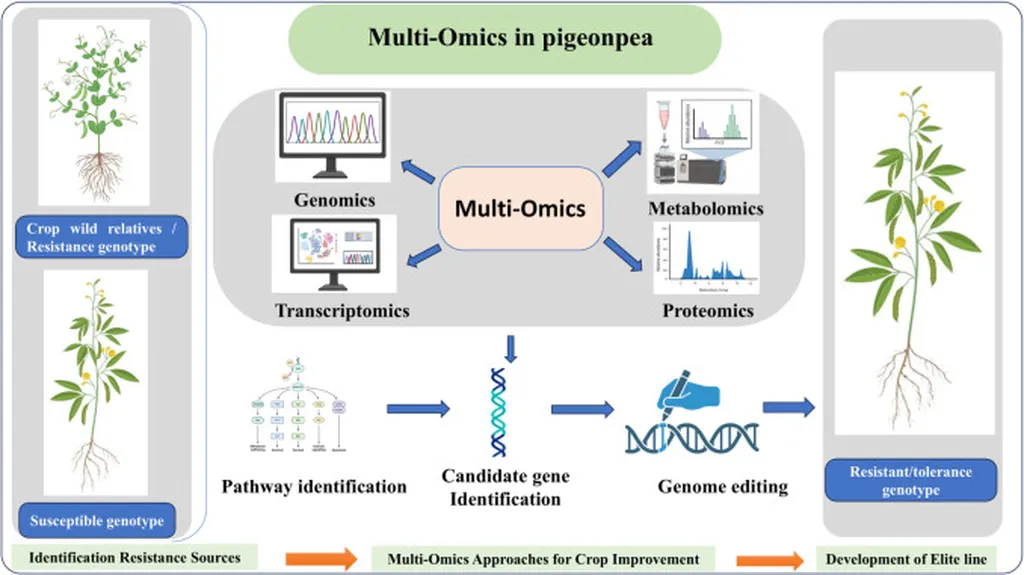In the relentless battle against crop-destroying pests, scientists have uncovered a novel defense mechanism in a wild relative of pigeonpea that could revolutionize how we protect our crops. The findings, published in *Molecular Plant-Microbe Interactions*, shed light on how *Cajanus platycarpus* fends off the notorious pod borer *Helicoverpa armigera*, offering promising avenues for enhancing crop resilience.
At the heart of this discovery is the protein methionine sulfoxide reductase B1, or CpMSRB1. When *H. armigera* attacks, *C. platycarpus* activates a suite of defenses, including non-enzymatic reactive oxygen species (ROS) scavengers and methionine sulfoxide reductases. These defenses protect the plant’s proteins from oxidative damage, ensuring they remain functional during the stress of herbivory.
What makes this research particularly exciting is the newly identified interaction between CpMSRB1 and chorismate mutase (CpCM1.1), a key enzyme in the phenylpropanoid pathway. This interaction boosts the production of phenylpropanoids, compounds that play a crucial role in plant defense. “The physical interaction between CpMSRB1 and CpCM1.1 is a game-changer,” says lead author Maniraj Rathinam from ICAR-National Institute for Plant Biotechnology in New Delhi. “It not only enhances ROS scavenging but also fuels the production of salicylic acid, coordinating defense signaling with jasmonic acid.”
The implications for agriculture are substantial. By understanding and harnessing this defense mechanism, researchers can develop crops that are better equipped to withstand pest attacks. The study also demonstrated that expressing CpMSRB1 in tomato plants improved their defense against herbivory, showcasing the potential for cross-species applications.
“This research opens up new possibilities for breeding more resilient crops,” Rathinam explains. “By incorporating these defense mechanisms into commercially important crops, we can reduce the need for chemical pesticides and enhance food security.”
The findings also highlight the importance of studying wild relatives of crops. These plants often possess robust defense mechanisms that have evolved over time, offering a treasure trove of genetic resources for crop improvement. As climate change and pest pressures intensify, leveraging these natural defenses will be crucial for sustaining agricultural productivity.
Looking ahead, this research could pave the way for innovative agritech solutions. From genetically modified crops to bioengineered defenses, the agricultural sector stands to benefit from these discoveries. By integrating these findings into breeding programs, farmers could soon have access to crops that are not only more resilient but also more sustainable.
In the words of Rathinam, “This is just the beginning. The potential applications of this research are vast, and we are excited to explore how these mechanisms can be utilized to benefit agriculture worldwide.” As we continue to unravel the complexities of plant defense, the future of agriculture looks increasingly promising.

